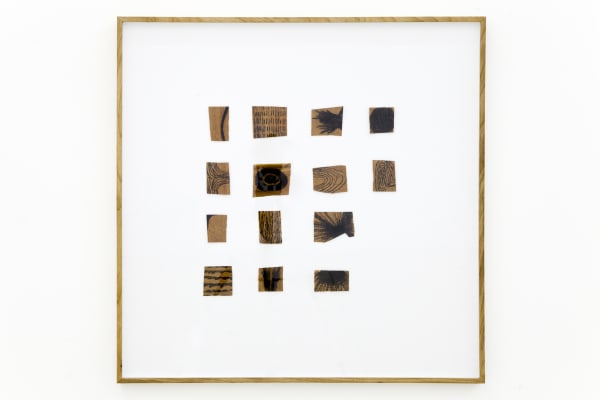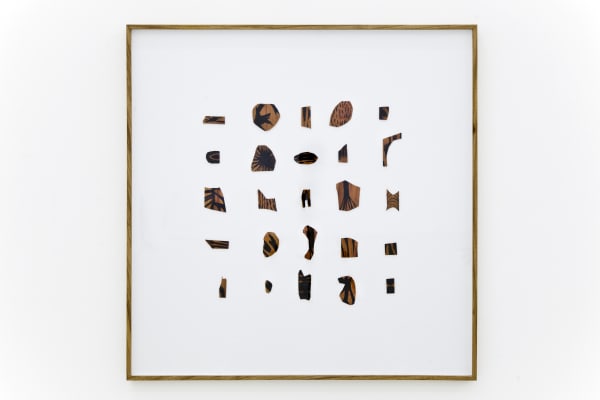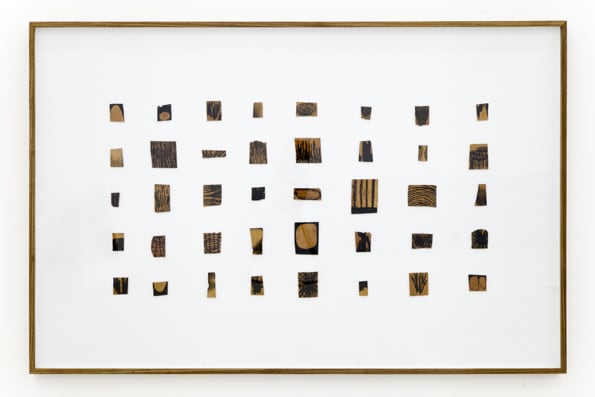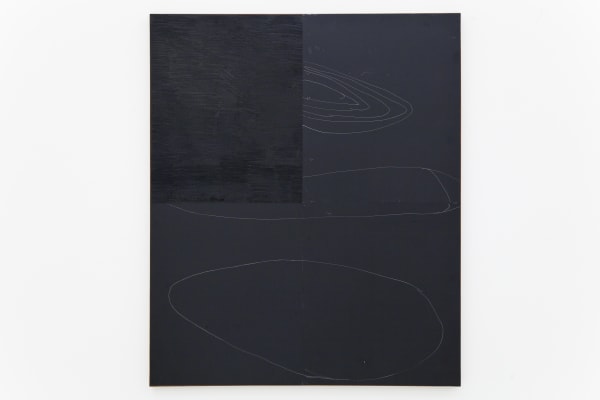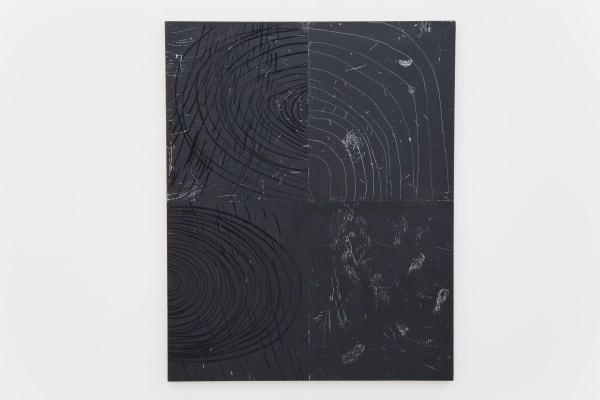Frederico Filippi: Snake in the grass
Galeria Athena is pleased to present Snake in the grass, by Frederico Filippi.
Frederico Filippi’s invitation for me to write this text, however short, poses a series of challenges for me. A few of them are personal and are not important at all, apart from the fact that I have not written about art for some years now, since turning to the violent Amazonian realities, which, incidentally, was certainly the reason for the invitation. Other challenges emerge from the works – and these do indeed matter more: How to write about works that gain their shape precisely from the refusal of a direct and unequivocal discourse to allude to the scenario of destruction of the Amazonian territory?
This rejection of a precise discursive form, moving away from a sociological tone that many artistic works that are inserted in this field acquire, has deep consequences in the interweaving between politics and aesthetics. Frederico rejects the problematic position of authority implied in “talking about” facts, to try to think these destruction processes based on the materials themselves.
When approaching something that from a distance appears to be a set of phrases written on the wall of the first room of the exhibition, the visitor is confronted with the work called “Cobra Criada” (Trickster), which gives name to the exhibition and is formed by different levels aligned with chainsaw chains. The chainsaw comes up as a dismantling symbol of an official discourse intended to be endowed with meaning; as an index of reality, it brings to surface the violence that official words, uttered by politicians and companies in the name of the environment, conceal. It also focuses on the discourse of major agricultural producers, whose bloodstained hands do not prevent the pursuit of green seals that guarantee the export of their products.
In the “Se uma lâmina corta um olho, uma selva azul escorre dele” (“If a blade cuts an eye, a blue jungle drips from it”) series, sharp black metal plates serve as the basis for the artist’s drawings, as in the “Existentes” (“Existing”) series, this time on Brazilian wood chips already processed and turned into plywood and veneers. The choice of materials is not fortuitous. Although both serve as support for the drawing, a territory where Frederico feels at ease and identifies himself, the materials are in blatant confrontation, and everything happens as if the works were the outcome of these strikes. In the case of black plates, the aggressiveness of the material releases its own image flows, either as random drawings (peculiar to cutting and handling the plates) or by means of the artist’s hand. There is a parallel between this form of drawing, which Frederico had already been carrying out in his work, and his recent interest in the phosphenes, bundles of images that arise from a stimulus in the retina, caused by rapid movement, luminosity or hallucinogens, a form of aggression that releases an imaginary flow. Meanwhile, in the series of drawings made on wood, titled “Existentes” (“Existing”), the material is inspired by the Memorial of the Eldorado dos Carajás Massacre, and, to a certain extent, it goes beyond the massacre of 19 landless workers murdered by the police in the interior of the state of Pará. The artist’s first motivation was to produce a piece of wood for each person murdered in land conflicts in Brazil, based on the count made by the Pastoral Land Commission – an endeavor that was rendered impossible by the large number of people murdered. It can be said that the work converts the wood into witnesses of the destruction and violence in the Brazilian countryside and forests.
The chainsaw that cuts the wood, the drawings made under the metal plates, and the metal that draws on the wood; in all exhibition works, the confrontation, and the friction between these materials, somehow causes common shocks in the Amazonian landscapes. These, in turn, undergo a violent overlapping process: A heterogeneous multiplicity of life forms is incessantly destroyed by a homogenization project in which monoculture and development are intended to be synonyms.
The first time I took a boat between Belém and Santarém, in 2016, I was amazed by the size of the clearings on the banks of the Amazon River. Even more disturbing is to see the advance of soybean fields over the cleared forest: They are like dams in the middle of the bush, monocultures that survive only because of insecticides, which try to contain the flows of the multiple forms of life in struggle to turn soy into weeds again. On the border of Santarém, the soybean production logistics on the banks of the Tapajós River unveils another confrontation, between two forms of economy: One involving the circulation of goods among traditional communities and the city, the other involving the flow of tons of grains whose profits are concentrated, the surplus of which leaves only traces of the destruction of the territory and of the forms of human and nonhuman life.
It is worthwhile to finish this brief text using an anecdote, among many that mark the misconceptions that constitute the meeting of worlds between native and white peoples. Lévi-Strauss, a French anthropologist who devoted much of his life to the study of South American native people’s thought and their ways of understanding the world, once described a situation he experienced among the Nambikwara. While Lévi-Strauss and the natives were preparing to exchange gifts among various groups, the anthropologist distributed leaves and pencils to the Nambikwara, who started scribbling. Only the Nambikwara chief took his notebook and imitated Lévi-Strauss, making drawings and laughing at himself, showing them to the anthropologist as if he could decipher the meanings. To the French anthropologist, that was when writing started among the Nambikwara: Not through difficult learning, rather by dissociating their symbols from the reality they allude to.
Jacques Derrida revisits the scene to explore precisely its opposite, which, in the context we live in, seems to me to be more potent: The challenge is to think that other forms of creating meaning, and therefore of writing, operate beyond our modern paradigm on what writing is. A trace, a body painting, a drawing, the construction of a village or the management of the forest create and are endowed with meaning. They invite us, therefore, to rethink what writing is, in affinity with the imperative that the contemporary world brings us, to seek other ways of speaking. Instigation which is, perhaps, one of the guiding threads of Frederico’s research, and which can be experienced in the “Cobra Criada” exhibition.
Fábio Zuker









